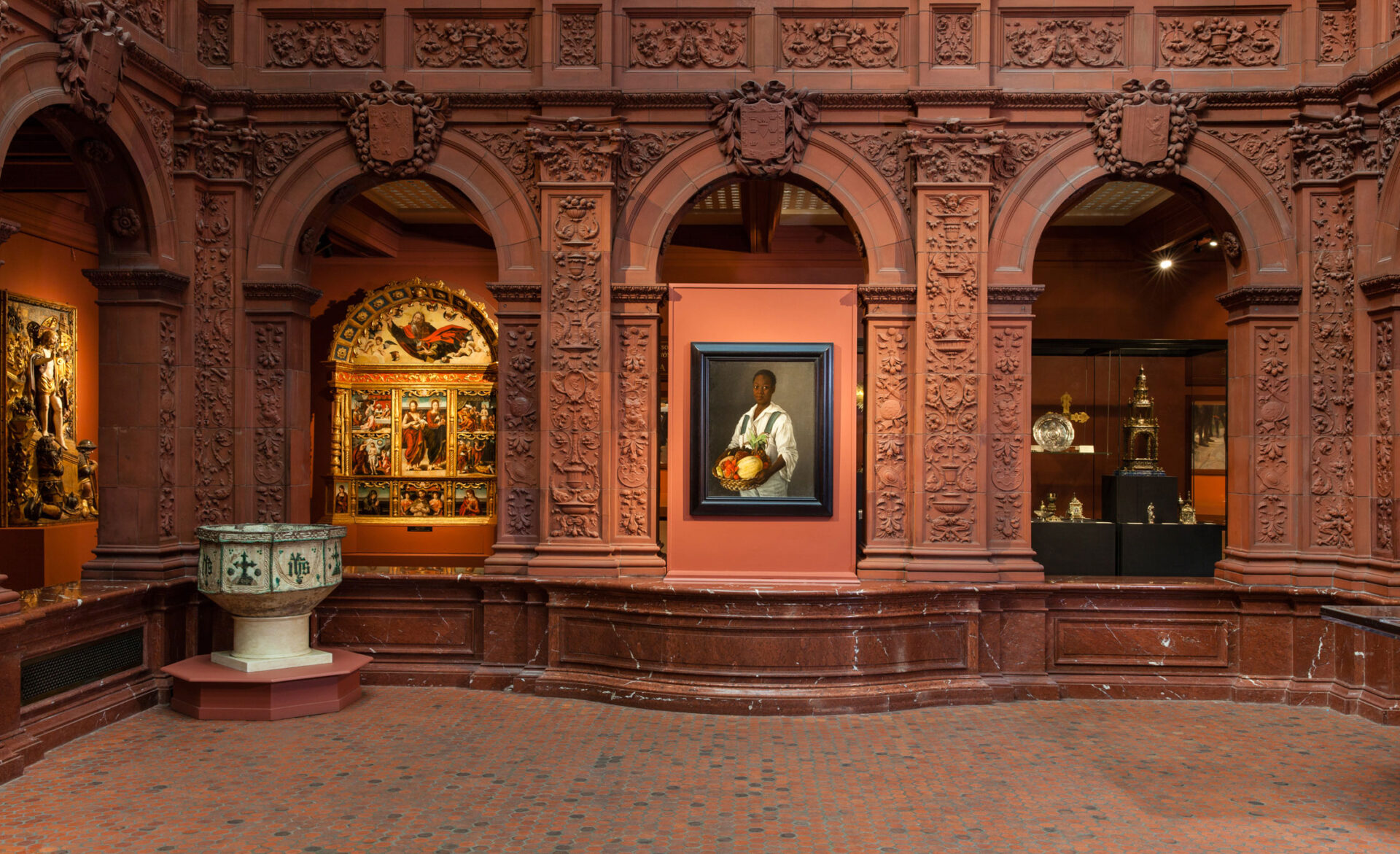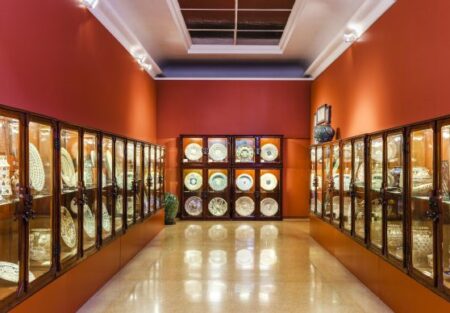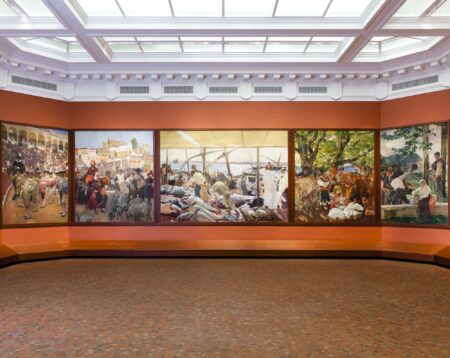
Main Court
Upon entering the Hispanic Society, visitors are brought into a Spanish Renaissance-style courtyard composed of ornate architectural terracotta rising 35 feet high. Made by the Perth Amboy Terra Cotta Company of New Jersey, the designs on the arcade columns are based on the carvings that surround the windows of the early 16th-century patio of the castle of Vélez-Blanco in the province of Almería, now installed at The Metropolitan Museum of Art. Other ornamental features such as the leaf scrolls, grotesques, and Roman trophies were adapted from ornaments typical of the early 16th century, while escutcheons above each arch bear the arms of Spanish provinces and cities. The floors are paved with unglazed, hexagonal floor tiles of red clay produced at the Moravian Pottery and Tile Works of Doylestown, Pennsylvania, which was founded by Henry Chapman Mercer, a major participant in the American Arts and Crafts movement. These tiles continue throughout the galleries and the Reading Room.
Prominently displayed in the Main Court is the Hispanic Society’s most famous painting, the full-length portrait of The Duchess of Alba (1797) by Francisco de Goya y Lucientes.
Visitors may also find temporary exhibitions of select works from the collection in the Main Court, as well as seasonal exhibitions of contemporary art in dialogue with the Hispanic Society collection. See Temporary Exhibitions here



